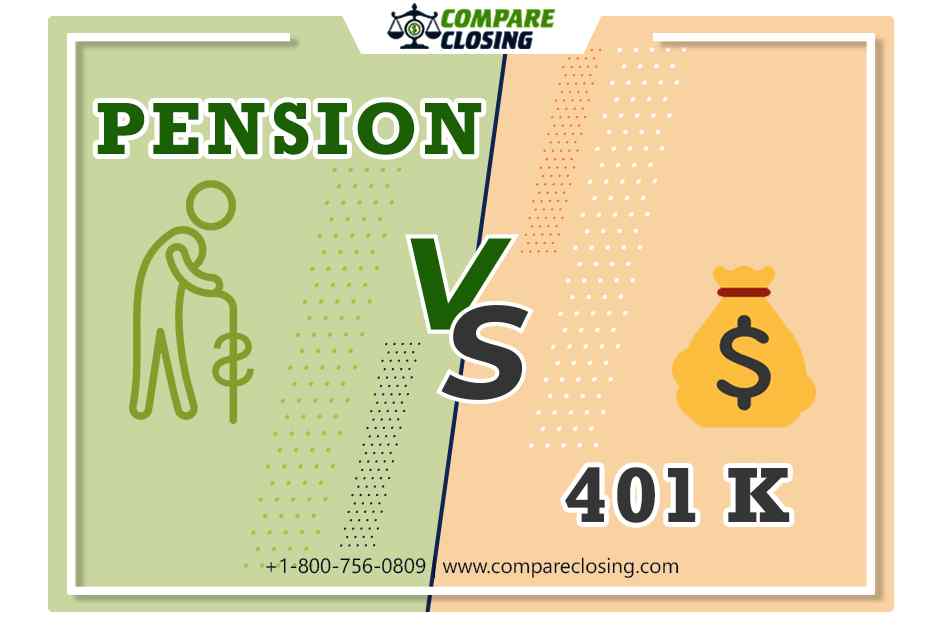Table of Contents
- What Are Netting Escrows & How Does It Work?: The Best Guide - January 2, 2024
- The Secret About Prescriptive Easement: Top Guide 1 Must Know - December 4, 2023
- About Home Equity Loans In Texas And How Can One Obtain It - November 27, 2023
Introduction to Pension Plan vs 401k
Both the 401(k) plan and the pension plan are employer-sponsored retirement plans. The major difference between both the plan is that the 401(k) is a defined contribution plan whereas the pension is a defined benefit plan.
If they want the employees and employers with a defined contribution plan can choose to contribute and invest funds to save for retirement.
Whereas a specified payment amount in retirement is provided with a defined-benefit plan. These key differences decide if it is the employer or employee that will bear the investment risks.
Pensions have become exceptional and rare letting 401(k)s pick up its speed, even though it was designed as a supplement to traditional pensions instead of as a replacement.
Pension Plans
With a pension plan, the employees do not have a say in the investment decisions, and neither do they take over the investment risk.
Rather, contributions are made to an investment portfolio either by the employer or the employee, and an investment professional manages these portfolios.
In return based on the amount contributed and, often, on the number of years spent working for the company the sponsor promises to provide a definite monthly income to retired employees for life.
The guaranteed income comes with a warning: The benefits may be reduced if the company’s portfolio is underperforming, the company declares bankruptcy or faces other problems.
The Pension Benefit Guaranty Corporation insures almost all private pensions, however, employee pensions are often protected because the employers are paying regular premiums. Pension plans provide individual employees with markedly less market risk than 401(k) plans.
A 401(k) which is also named as a – defined-contribution plan, needs the pensioner, to contribute their savings and make investment decisions for the money in the plan.
The pensioners can have the power to decide how much they put into the plan but they cannot predict how much they can get out of it when they retire as it all depends on the market value of those invested assets at that time.
That said a pension plan also commonly known as a – defined-benefit plan, where the pension plan sponsor, or the employer, oversees the investment management and guarantees a certain amount of income when the employee retires.
Because of this huge responsibility on their shoulders, lots of employers have chosen to quit defined-benefit pension plans and chose to replace them with 401(k) plans.
401k Plans
The primary funding of a 401(k) plan is through employee contributions through deductions from paycheck pretax. The money that was contributed can be distributed into various investments, like mutual funds, based on the options made available through the plan.
In a 401(k) plan all investment growth is tax-free, neither is there any cap on the growth of an individual account.
But 401(k)s, place the investment and longevity risk on individual employees, requiring them to choose their own investments with no guaranteed minimum or maximum benefits which is not the case with pensions plans.
Employees run the risk of not investing well and outliving their savings.
Many employers offer equal contributions with their 401(k) plans, sometimes up to a certain level, they contribute additional money to an employee account whenever the employee makes their own contributions.
For instance, If an employer offers a 50% match to the employee’s individual contributions to their 401(k) up to 6% of the employee’s salary.
The employee earns $100,000 and contribute $6,000 (6%) to their 401(k), so the employer contributes an additional $3,000.
There is a limit to how much an employee can contribute to a 401(k) every year. In 2020 and 2021, if they are 50 or older the maximum an employee can contribute is $19,500, or $26,000.
Conclusion
A retirement plan where the employees can contribute and employers also may make matching contributions is a 401(k) plan.
Employers fund and assure a specific retirement benefit for each employee and face the risk of doing so with a pension plan.
Pensions plan in the private sector were very common earlier now have become sparse and have been replaced by 401(k)s
but they are still quite common in the public sector, particularly in government jobs.
The burden of saving and investing for retirement and facing the risk involved has been placed on the employees’ shoulders since the shift to 401(k)s.
A current employer is more likely to offer a 401(k) than a pension in its benefits package.
If the company that you are working for is still offering a pension plan, you reap the benefits of a guarantee of a given amount of monthly income in retirement and investment and longevity risk placed on the plan provider.
If you are employed with a company offering a 401(k) plan then you are responsible for the contribution and choice of investments on your own.
Amanda Byford
Amanda Byford has bought and sold many houses in the past fifteen years and is actively managing an income property portfolio consisting of multi-family properties. During the buying and selling of these properties, she has gone through several different mortgage loan transactions. This experience and knowledge have helped her develop an avenue to guide consumers to their best available option by comparing lenders through the Compare Closing business.






I found it interesting when you said that the 401k plan allows both employers and employees to contribute to a retirement plan. This is something that business owners must consider, especially if they are looking for the best retirement benefits for their people. I could imagine how they could consult a 401k design company so their queries could be addressed before having this type of plan implemented.